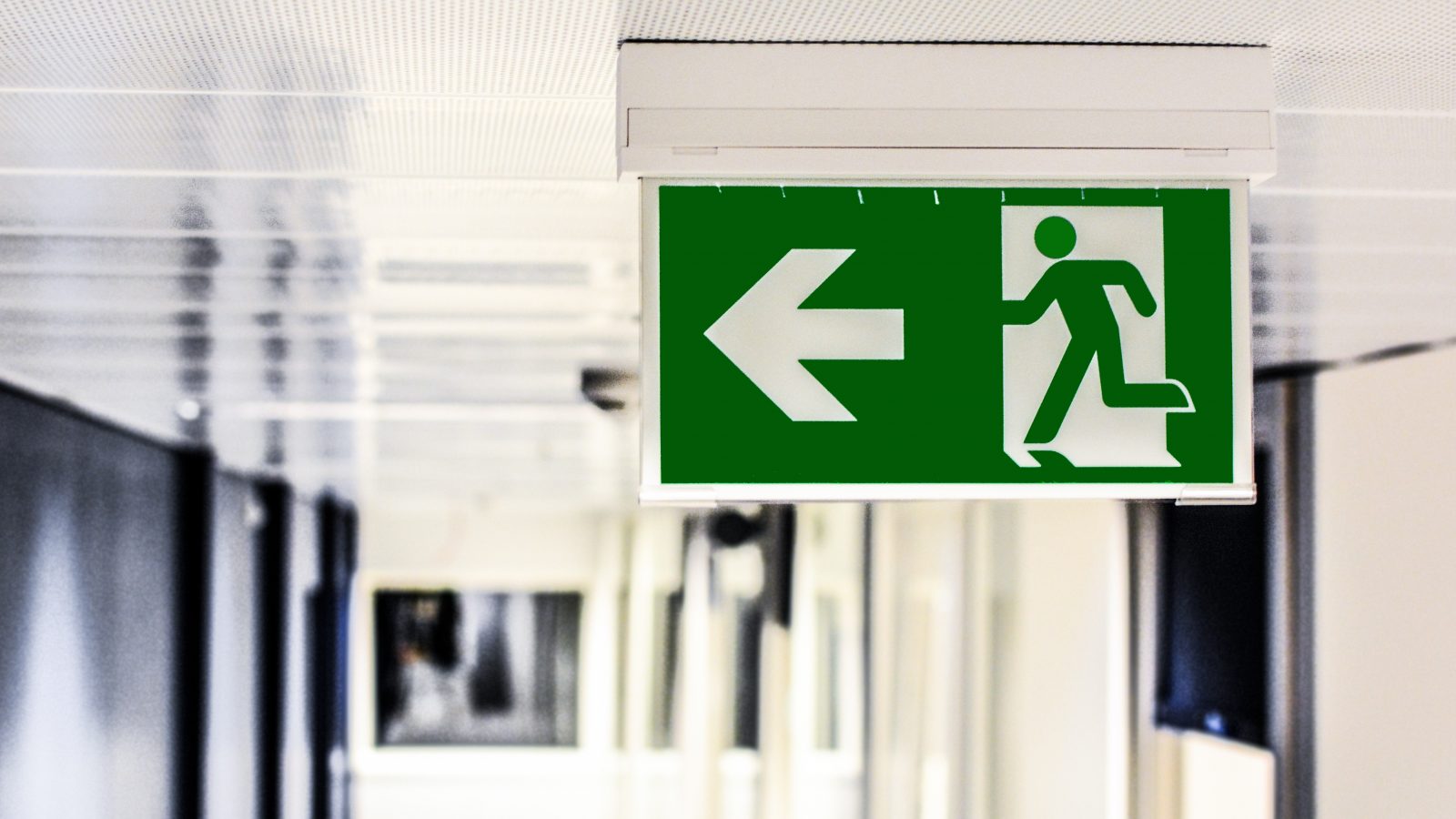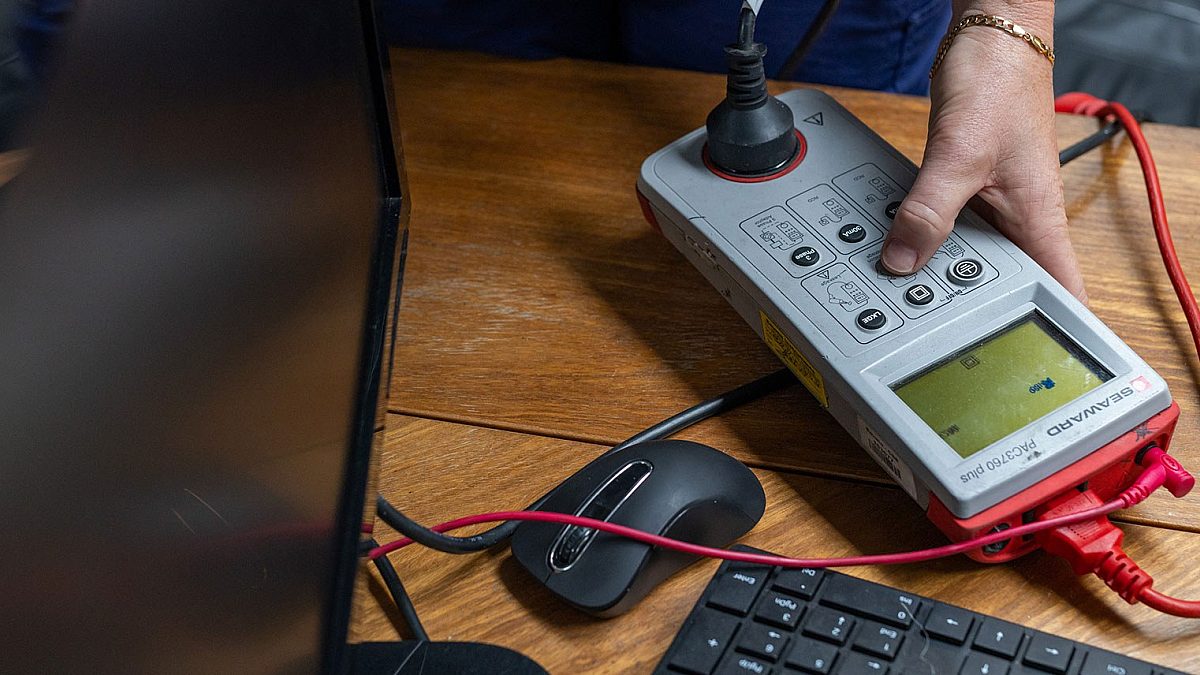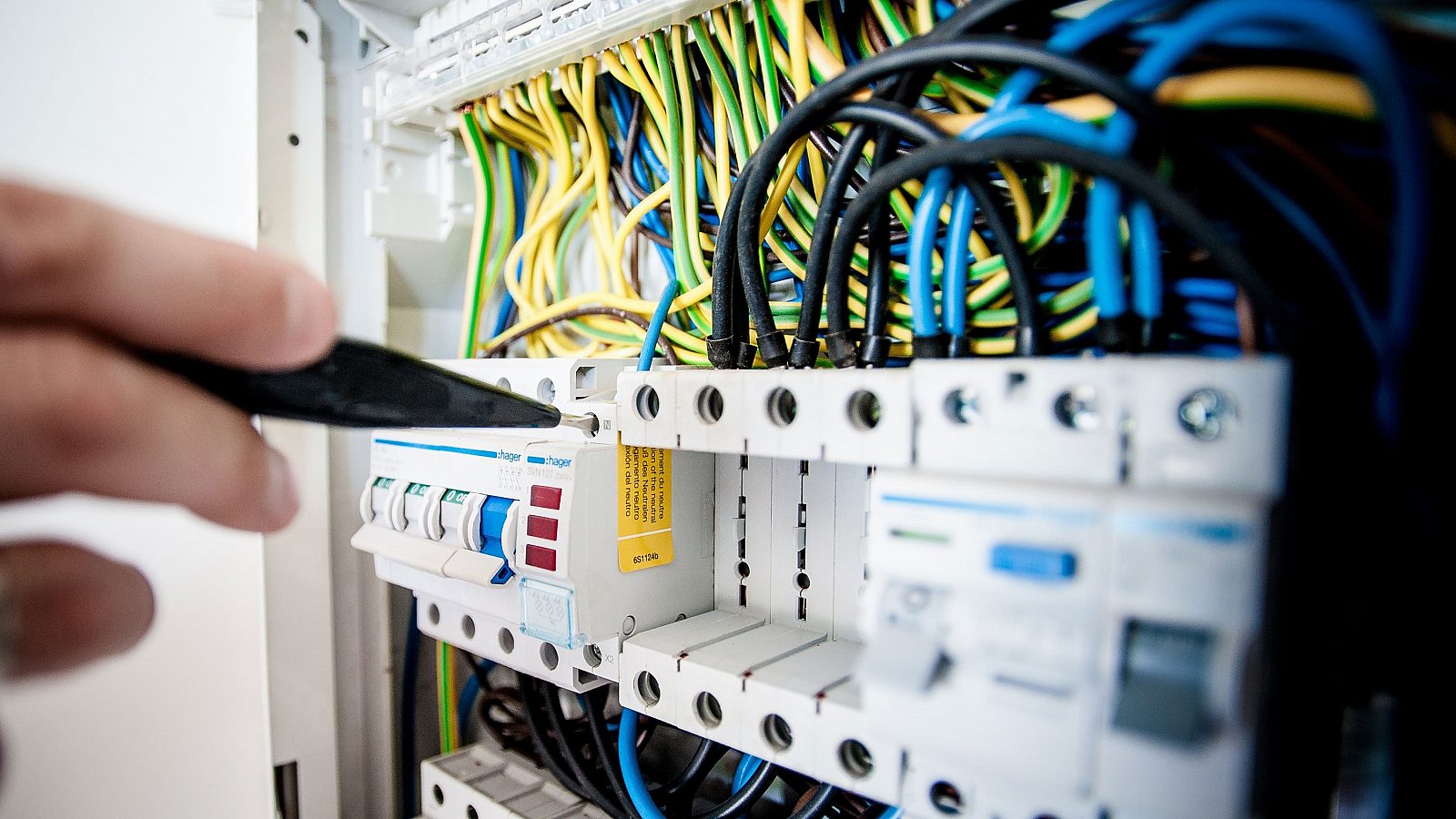Exit & Emergency Light Testing Emergency & exit lights help people escape a building. They must be tested periodically
Get a Quote

Overview
We are all aware of the green exit light above doorways, but are you also aware that depending on the size of an area, a number of emergency lights with a little red indicator light that are most probably right above your head in the ceiling that you have not taken notice of before or wondered what they are. All emergency & exit lights perform a valuable task in helping personnel have an illuminated path to escape a building when fire or power loss occurs. And as such these must be tested periodically.
Information
How do they work?
Emergency and exit lights have mains power 240v but also have a battery. This provides power to the fitting and illuminates the lamp or led strip when loss of power is detected.
Exit lights as there name suggests are generally located above exit door or indicate a pathway to an external exit door. The green colour is most effective when smoke is present in a building.
Emergency lights again provide an illuminated pathway to assist in a safe passage to the exit doors. The batteries generally only last 2 – 3 hrs but are only required to last 90mins under current Australian standards and BCA (Building Code Australia) which all buildings are built to.
Exit lights are on all the time and are called a maintained unit as they must be illuminated 24hrs a day 7 days a week etc.
Emergency lights only come on when loss of power occurs. These are referred to as non-maintained.
Why do I have to test?
Exit and emergency lights are required to have two (2) 90minute discharge tests per year. This is a requirement under current standards and in some cases local councils will require certification to be provided by the person that is authorised to test these units.
Certification must be provided to your local council by a qualified provider that the tests have been done in accordance to Australian standards AS2293.2 and Australian Building codes and that they have passed a discharge test.
These fittings like all things built in today’s world only have a working life of between 5 – 10 years and must be replaced when the unit fails to discharge or expel light for less than 90minutes.
Get a prompt quote to rectify all faults found
If any fittings have failed, ATTS can provide a competitive quote on replacement LED fittings that are environmentally friendly, have Australian approval and 3 – 5yr replacement warranty. All fittings comply with Australian specifications and requirements
For larger buildings we can also supply an onsite test register of all fittings and locations that is kept onsite and signed by our technician upon completion of the test.
Services
ATTS have been involved in testing exit and emergency lighting for the last 15 years
We have a number of qualified staff that can not only do the test but we can also repair or replace faulty units
Minimise the risk of a safety incident by making us accountable for your testing requirements
Are compliant with the AS2293.2, and have access to a kept logbook of all safety tests
Gain access to specialist technicians qualified in emergency light testing
FAQs
This is a test that certifies all the Exit & Emergency lights are in good working order and that the batteries sustain their charge for 90 minutes during a power blackout or building fire.
Six Monthly Tests
- Visual checks of all Emergency and Exit lights for mains operation.
- Check for operation of maintained exit lights and replace faulty lamps prior to testing where required.
- Isolate power to all exit and emergency lights, in most cases either by utilising the test switch or turning off the circuit breaker that supplies power to the fittings
- To meet the Australian Standards AS2293 / BCA requirements, a discharge test will last for a duration of 90 minutes.
- After tests have been completed the tester must restore the system to normal operation.
- Those units which have failed the discharge test must be either repaired and restored to normal condition or replaced.
- Lamp replacement of any defective lamps shall be replaced. All lamps should be replaced on a yearly or after 10,000 of operation.
Twelve Monthly Procedures
- Carry out all checks as per six-monthly procedures.
- Clean and Inspect fittings and clean reflective surfaces as necessary on all emergency and exit lighting diffusers as required
- Visual checks to ensure that the emergency lighting system operates in correct relationship to the normal lighting in any designated area.
Australian Standard AS/NZS 2293.2:1995 states that Exit and Emergency lighting must be tested in accordance to the procedures described in clauses 3.2.2 and 3.2.3, and not exceed intervals of no greater than specified, which is 6 monthly & 12 months. So in other words twice (2) a year
In accordance with Australian Standards 2293.2 emergency lighting systems are required to be tested & certified periodically, by conducting a 90 minute battery power down (discharge) test.
Link to this article- Report any failures and record data in on site manuals.
- Record data in electronic format for OH&S auditing processes.
- All maintenance records must be in the form of hard copy eg: log books.
- Electronic copies may also be used.
- Any corrective action must also be taken to repair faulty emergency lighting and recorded in the onsite maintenance book
- The names of the persons responsible for carrying out the maintenance work and the date the work was completed
- The logbook or alternative record system shall be kept on the premises at all times, or at such other locations as may be approved by the regulatory authority
Australian Standard AS/NZS 2293.2:1995 states that Exit and Emergency lighting must be tested in accordance to the procedures described in clauses 3.2.2 and 3.2.3, and not exceed intervals of no greater than specified, which is 6 & 12 months.
Link to this articleA licensed technician / electrician is required to carry out Emergency Lighting Testing & Inspection
Link to this article
Get a Quote
Or just ask a question...
Related Services

Compliance
Testing & Tagging
Testing and Tagging your electrical appliances to make you compliant and your staff safe

